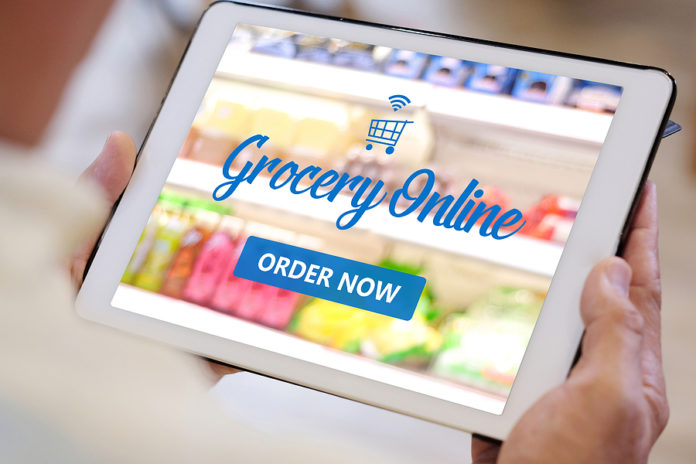
By Kevin Lee, Sr. Solution Engineer at SafetyChain
CPG companies focus on increasing brand recognition, competing for shelf space, and retaining consumer loyalty as new products appear. As the industry recovers from the effects of COVID-19, forward-thinking companies can seize the opportunities for growth that have emerged since.
When COVID-19 Struck
As 2020 opened, the coronavirus pandemic struck. Could the most prescient CPG market strategist, thinking “outside the box,” have imagined it? Or have imagined that after decades of stable, predictable parameters of competition, a new industry would be precisely positioned to gain from the CPG disaster?
The digital shelf was in place, ready to compete with the physical store shelf.
For example, online delivery of groceries doubled from February to March 2020; and regular online shoppers increased from 13% of U.S. consumers to almost one-third. Four out of ten of those new online consumers were trying online grocery purchases for the first time. The COVID-19 pandemic had accelerated what had been an extended process conversion into a stampede.
While we’re moving towards a safer future as the vaccine continues to be made available to broader populations, COVID-19 has left its mark on the industry. What are the strategies, expectations, and plans for CPG companies looking ahead? And what are the lessons that the whole CPG sector must grasp, implement, and extend to survive and reclaim market share?
The pandemic will end, but not its impact on CPG companies
Consumers have experienced the ease, variety of choices, and cost savings of online purchases and delivery. Estimates suggest that more than 80% of people who grocery shopped online during the early days of the pandemic will continue to do so post-COVID.
CPG companies must become the vendors of their own products online — and this transformation is underway. Online grocery sales are anticipated to grow more than 60% by 2025, so stores that integrate their digital and physical operations are likely to see the largest sales growth.
CPG companies cannot afford to “wait out” COVID-19
Many CPG companies have used the pandemic’s impact to catalyze their own innovative role in the digital sphere. Companies that put in place multi-channel sales systems will capture most of the predicted growth gains in their industry. As the recovery from the pandemic appears on the horizon, the window of opportunity begins to close.
Demand in almost all CPG categories has spiked, and a dynamic of periodic stockouts (meat and certain frozen foods, among others) drove consumers to new brands. Brand loyalty, frequently over decades, is the marketing engine of CPG companies. Since all the leading online sellers such as Amazon had these periods of unavailability, shoppers switched brands—an eventuality that big established CPG brands have tried to resist for years.
By the same logic, CPG companies that branch into online areas now with high visibility can hang onto loyal customers and win their share of customers switching from brands during the online sales surge. CPG companies will need real-time tracking of online inventories and sales for all ecommerce outlets. The twin goals are to take advantage of short-term surges, and at the same time, create a database on customers, online shopping behavior, and the most effective sales pitches.
Long-term strategies for a new “normal” in CPG marketing
At the same time, CPG companies new to digital marketing, or contemplating new initiatives, should be fashioning their strategy and long-term plans. There has been some reversion to the old “normal,” but CPG companies must try to discern and map a new landscape for marketing and distribution. And that, in turn, will suggest where major new investments — strategic bets on the online world — should be placed.

Some new capabilities to achieve success
With plans in place, as well as decisions about investment, what capabilities will characterize the CPG companies that are most successful in the new ecommerce economy? These are some factors that companies are preparing to take a leading role in their online success down the road:
The digital shelf
The old challenge of making the most of shelf space applies to the digital shelf. On a given page of a website, the shopper still can view only a few brands and items. Where do the top-selling products show up and how much prime space is given to building the future of new or lower-ranking products? Where a company’s brand is side by side with competitors, how can the differences be exploited?
The product mixes
Are certain brands or products optimized — or can they be — for a specific sales channel? And does the company’s assortment of products effectively close off easy and obvious entry points for a competitor’s product? These are the kinds of questions that can be easier to answer online because the digital world is inherently data-based. An issue like product assortment can be tracked and analyzed in ways inconceivable in the physical store. In effect, the competition on the analytical level just got much, much stiffer. Providing real-time data to CPG executives empowers CPG companies to satisfy increased online demands.
Tracking inventory
The same type of questions, and potential for precise answers, applies to inventory levels and avoiding/exploiting stockouts. This means using the well-established capabilities of online retailers to track not only existing inventory assortment but the likely impact, for example, of the promised speed of delivery and of potential returns.
Marketing old and new
Inevitably, the CPG company boosting its presence online will devote planning and resources to optimizing consumer behavior. The digital marketing industry — from advertising platforms like Facebook and LinkedIn, to website creation and refinement to search engine optimization — is now a giant. CPGs will adjust to some division of responsibility between their own marketing department and marketing firms and consultants.
Forming a response to the pandemic can be a tall order, especially for CPG companies that are starting their online initiatives now. The crisis has hurt CPGs, but it also can catalyze their efforts to retake lost ground. This opportunity should not be missed.
 Kevin Lee is a Sr. Solution Engineer at SafetyChain. Kevin has over 25 years of manufacturing, distribution and supply chain experiences. For over 10 years, he has worked in the Quality Risk and Compliance arenas with companies regulated by the FDA. Kevin specializes in manufacturing and supplier quality management.
Kevin Lee is a Sr. Solution Engineer at SafetyChain. Kevin has over 25 years of manufacturing, distribution and supply chain experiences. For over 10 years, he has worked in the Quality Risk and Compliance arenas with companies regulated by the FDA. Kevin specializes in manufacturing and supplier quality management.






